Dhaka depictions: A city through artists’ eyes
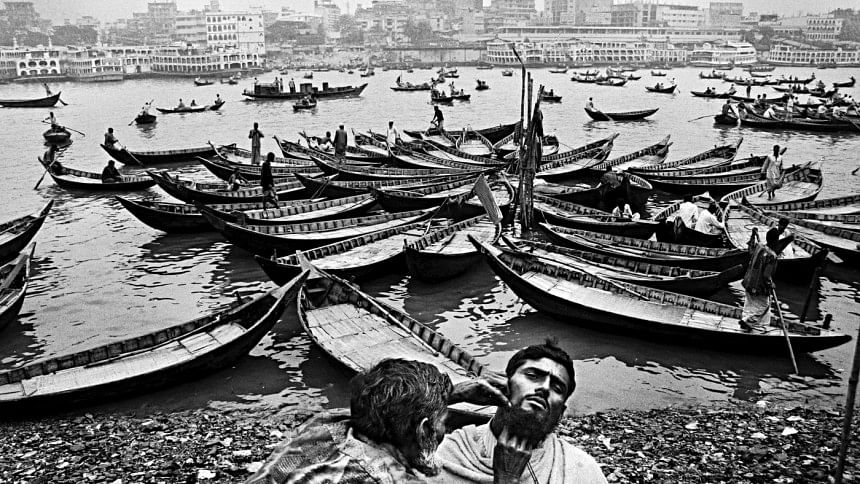
We have a constant love-hate, or bittersweet relationship with our city. And one cannot deny that despite all the flaws which make the capital unbearable at times, there is a charm and beauty to it.
This naturally begs the question: where is the said romance or beauty of this city? How can one find it, amidst this disarray of mindless concrete and ever-so-busy people?
To answer that, we turn to our artists, working in different fields and genres, who have taken Dhaka as their muse — and hence, we present to you, glimpses of Dhaka through the eyes of contemporary artists.
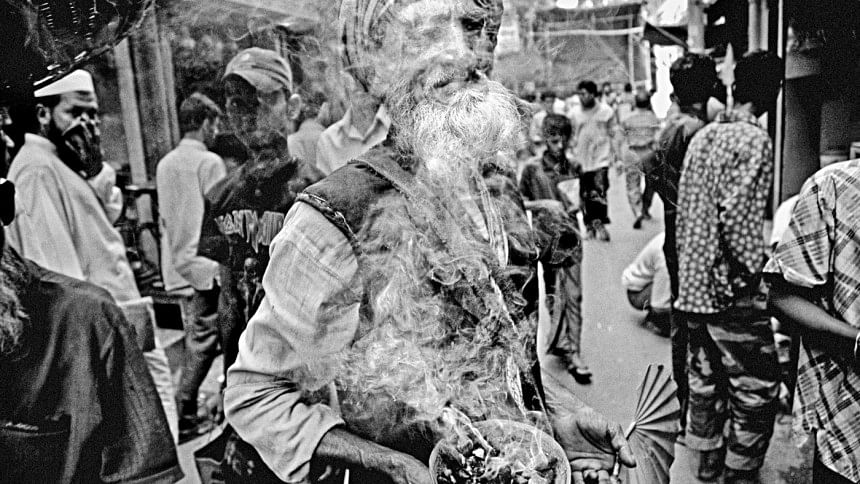
An ode to a magical city
"When compared to some other cities abroad, there are not many songs or literary works which pay a grand tribute to Dhaka," Sharmin Sultana Sumi from the famous band, Chirkutt, points out.
Indeed, there are only a few.
One shining example is 'Jadur Shohor', an immensely famous song of the band, which was primarily made for a TV drama of the same title, directed by Nurul Alam Atique, with lyrics written by a documentary filmmaker and lyrist, Nahidur Rahim Chowdhury, also known as Ananda. The lyrics and overall song were also later extended by Chirkutt.
"There are so many stories in this city, of rags and riches, of happiness and sadness, and of inequality. The song pays a tribute to Dhaka, exploring its duality or multi-dimensionality," Ananda explains.
Like he says, the song takes quite a comprehensive approach, bringing together the numerous aspects of our city and evoking the many emotions we feel as Dhakaites.

A concrete jungle, false laughs, and fake tears, the narrow alleys and larger roads, dreams of millions of people, many of whom have come here from different corners of the country — all co-exist in this city of the 'Gangaburi':
"Kobi hashe, Taka bhashe
Gangaburir shohore
Ashman tui kandish keno
Attalikar pahare
Miche hashi, miche kanna
Pothe pother arale
Ei shohor, jadur shohor
Pran er shohor Dhakarey"
The song celebrates the love and fascination we have for this city. As Sumi feels, there is something in the air of Dhaka and its streets that draws us in; when you are abroad, for example, you really miss it.
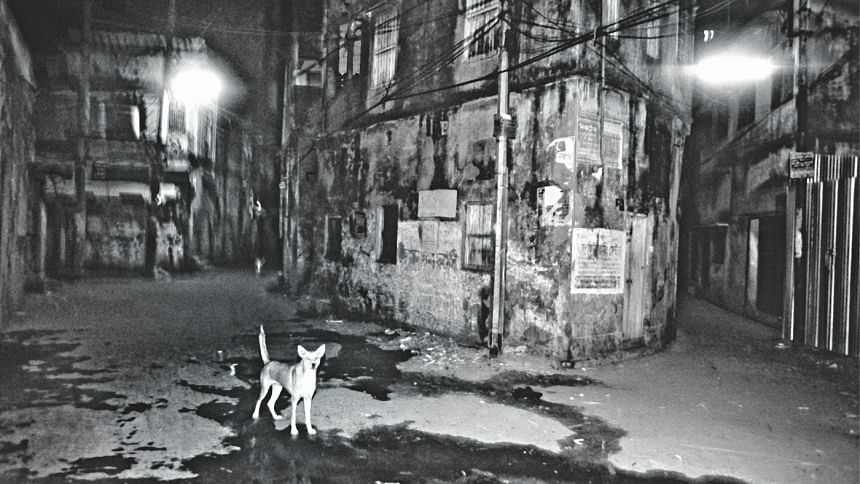
Director's cut: The Dhaka chapter
Eminent filmmaker Amitabh Reza Chowdhury is one director who has brilliantly portrayed his city, time and again. Let's first appreciate that he is a storytelling wizard. "Everyone has a story in life. Everyone has joys, sorrows, romance, and anger. If I shoot your whole life, it will become a movie!" he says.
When an artist cultivates such a philosophy, he is sure to ascend to become a magnetic storyteller. And that's what happened with Amitabh Reza, I reckon.
For starters, consider the song 'Ei Shohor Amar, Ei Manush Amar.' It has been composed and sung by none other than Shayan Chowdhury Arnob, for Amitabh Reza's hit movie Aynabaji. The lyrics were written by Amitabh Reza himself.
"When we finished shooting for Aynabaji, we realised that two different cities lived in this movie: Old Dhaka and new Dhaka," the director looks back. "And so, in order to properly wrap up this aspect of the story, and for those people who love Dhaka, we felt the need for a suitable song."
And hence, Ei Shohor Amar came to be.
"Since Dhaka is our home, no matter how annoyed we get or whatever the circumstances are, there is a deep affection for it. The song springs out of this affection," he added.
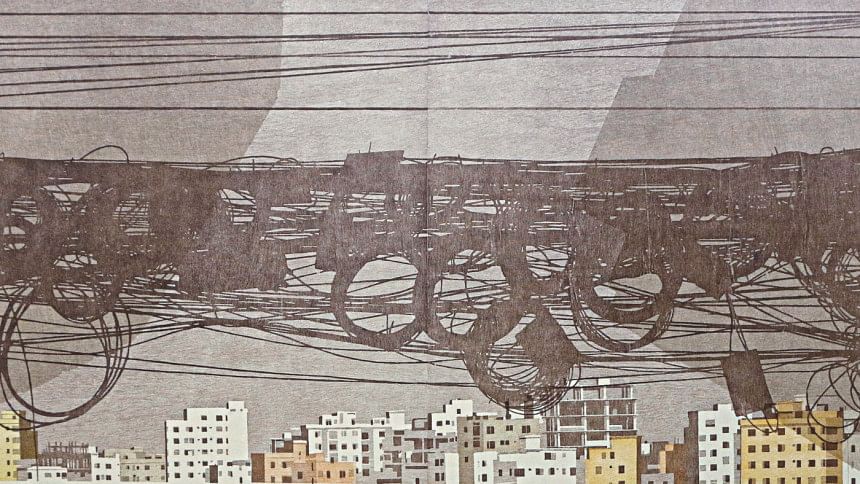
It is a song where many elements and aspects of Dhaka — which all its citizens are well-acquainted with — have been skilfully tied together. So much so, even when you listen to it for the first time, you may strangely feel a sense of familiarity:
"...Tumi shunte ki pao
Bhirer majhe keu
Motijheeler shapla phooley pani
R ek school balikar shobuj dress khani
Gorosthane fokir
Majare majare zikir
Ei shohor amar, ei manush amar."
Arnob's sweet, soft, and melodious tune and vocals are extraordinary vessels that carry the heart-touching words of Amitabh Reza — a synergy worth noting.
Even just with Aynabaji, one thing is certain: Dhaka through Amitabh Reza's lens is breath-taking to see. How does he find so much beauty in this city?
"When you are running, you don't really see much. When you are in a rush, you don't see the beauty of anything," the filmmaker replies. "So, the best way to do it is to slow down and take a deep breath. Pause, and see — perhaps, for example, the struggle of a tiny plant which sprouted from a wall, or perhaps, how people interact with each other."
Dhaka is not just about the beauty, of course. Another work of the same director, a web series called Dhaka Metro, depicts, as he puts it, the 'frustration of the city.'
The story follows the journey of a corporate highflyer who, one morning, suddenly leaves the city and drives off aimlessly. Dhaka is essentially physically absent in most of the series; Amitabh Reza says, "You carry Dhaka with you wherever you go."
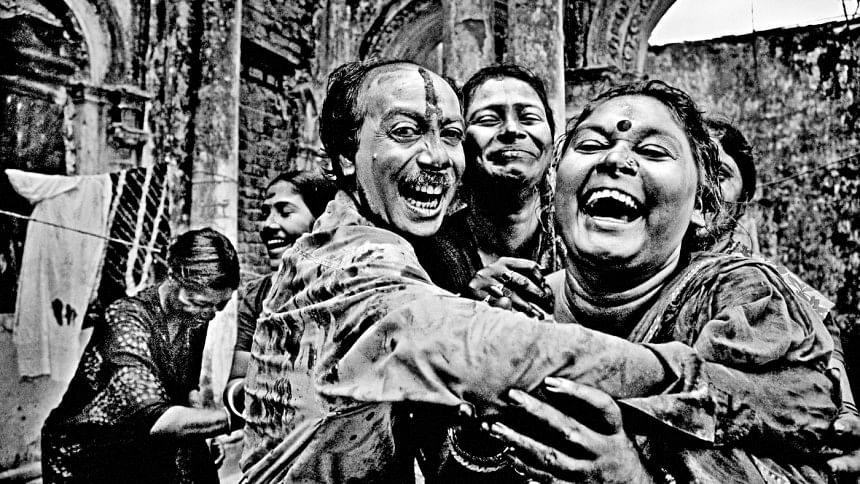
Theatrics in the mundane
Besides songs and cinema, photography is another powerful medium of expression. And Munem Wasif has extensively used it to share his obsession with Old Dhaka. His book, 'Belonging,' is a concrete reflection of that.
He has been working on Old Dhaka for more than a decade now. But he laughs, saying, "Who counts days or years?"
Well, if not the time period, the very fact that he actually stayed at Beauty Boarding in Old Dhaka shows the level of dedication and commitment for the project.
From architecture and how it informs of the past, to the sense of community and bonding prevailing there, to the chaos and vibrancy which Old Dhaka is filled with — Wasif captured them all in his frames, in black-and-white.
"There is a kind of magic in black-and-white. It is in a way minimalistic, and also, the sense of time becomes blurry," he says about the colour palette.
With the palette set, he depicts the buzzing scenes of Old Dhaka. And brings to fore so much that misses a layman's eyes!
There is a lot to see in the everyday mundane.
To illustrate, a photograph shows a barber at work, under the open sky, right in front of the Buriganga. So, you see the busy river in the background, and also the barber busy at work. This is just one depiction of how, in a single space — or in just one frame — diverse things are seen to be carried out, day after day.
"In Old Dhaka, you often don't have many separate spaces to do different things," Wasif explained. On the other hand, his snapshots of the narrow winding alleyways at the dead of the night are simply surreal.
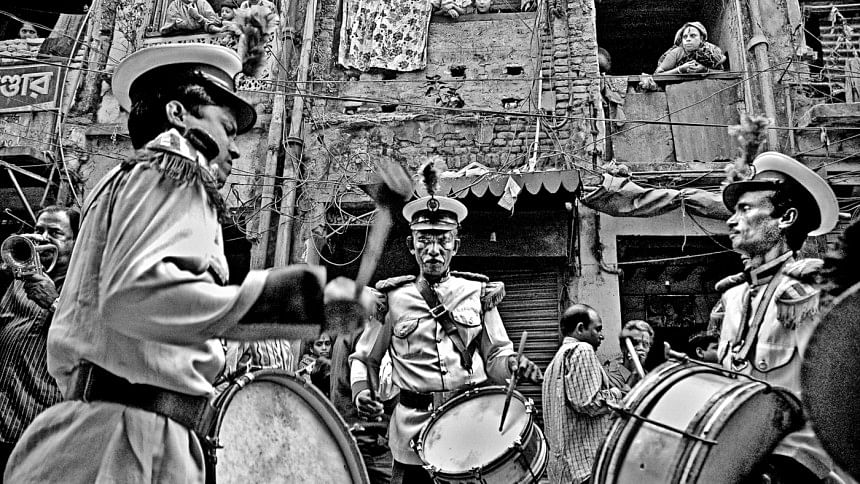
Wasif loves the drama and the theatrics of Old Dhaka. "I have come across so many interesting characters!"
See, for example, the curious portrait of an old bearded man, with a pagri worn on the head, and smoke rising up from a holder in his hand. Wasif informs that this person, in the morning, walks from shop to shop, spreading incense, and people often give him a tiny amount as a mere token or fee.
"You know, there is a culture for these things there! People, despite their busyness or problems, somehow have time and space to do such things," Wasif says.
For me, personally, Munem Wasif's Old Dhaka portfolio is all about people, the communal bonding that binds them together, and the warmth they share — yes, this bit I cannot highlight enough — the sheer warmth conveyed by the emotions in most of the photographs!
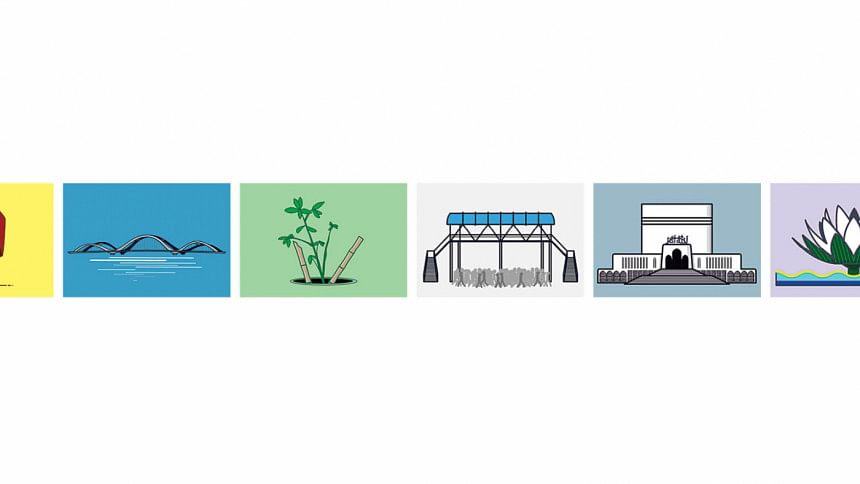
Dhaka under construction
If Munem Wasif's photographs beautifully depict the warmth of Dhaka, then one may say that the prints of Anisuzzaman intelligently portray the cold character of the city.
The 'Kaleidoscopic Complexity' of this revered artist, a professor at the Faculty of Fine Arts in Dhaka University, provides a supremely unique glimpse of urban architecture and planning.
The canvases, usually vast in scale, are all about horizontal and vertical lines and geometric shapes. The subject of the works is usually buildings undergoing construction — so, portrayals of bare architectural structures in the making and iron rods and wooden planks and the like.
"In the early 2000s, when Bashundhara City was being constructed, I used to feel amazed by the structure. I took many snaps of the site and started to draw images," he shared.
And the theme is still relevant today, with many ongoing construction projects and new buildings popping up in our city.
Many prints also show heaps and heaps of buildings, all meticulously put together, while others point out to the dense clusters of electric wires which run above the streets. A concrete jungle!
#dhaka101
In this day and age, digital tools have carved out a space in the art world, with social media being used as a platform.
One such artist in this sphere is Naznoor Rahman Rino. The 'noob artist' (as he describes himself on Instagram) uses Adobe Illustrator to express his unique style of looking at Dhaka.
His series, Dhaka 101, takes one feature or trait of Dhaka at a time and strips it down into bare-bones, thus allowing him to pinpoint on the details of that particular subject or element which are quintessentially associated with our city.
Take for example, his portrayal of the degh of biriyani, or tehari. It basically shows a large pot wrapped in a red cloth; a familiar sight. But when you closely look at Rino's representation of this, you'll be charmed by the details and the research which has gone into the making.
"A small plate has been included along with the degh, which is used to serve the rice into the customer's plate. And then there is the drum on which the degh sits. The drum even has a small arrangement for heating, to keep the food warm!"
Another such illustration would be the open manhole, which unfortunately is something not uncommon in our city. The manhole, depicted by Rino, not only has its cover missing, but has plants and bamboos sticking out of it. "While it takes a while for the authorities to put in a cover, the locals arrange for the makeshift solution as a caution for pedestrians."
And hence, his artworks not only celebrate Dhaka, but also bring forward its problems. His rather sarcastic representation of jaywalking and lack of enforcement of traffic rules, for example, involves an empty foot-over bridge with crowds of people crossing the road under it!
So, each feature, trait, element, or subject represents Dhaka, from the beloved Baitul Mukarram mosque to the ever-so-familiar Shapla Chattar, to the common barricade put on our roads.
He started Dhaka 101 in around the end of 2016. So far, he has uploaded around 40 of these artworks; he plans to continue till 101, living up to the series' name!
The eternal love-hate relationship
We started off by saying that Dhaka is a chaotic and rather 'difficult' city; even dared to call it ugly! While all that may be argued to have some truth in it, there is that charm and beauty too, if you look for it, like these artists do.
Our artists possibly share that same love-hate relationship. And so, we asked them: what is it about Dhaka that you love the most, and what is the one thing about Dhaka that you hate the most?
For the digital artist, Rino, it's the same thing: chaos!
Meanwhile, Professor Anisuzzaman says that it is the traffic that really gets unbearable. The artist, who so beautifully depicts architecture and urban planning, holds a fascination for many of the modern buildings and the beautiful decor adorning its interiors.
On the other hand, photographer Munem Wasif, who is 'drawn to old cities,' relishes in the very energy and vibe this city is filled with, but points out to the lack of proper infrastructure and logistics.
Quite the same sentiment reverberates in Amitabh Reza Chowdhury's mind. He loves the history and the people of the city. But the urban planning and infrastructure must improve. At same time, he complains how a lot people are exploiting our city to their advantage.
Artists love their history, and so should the rest of us. Ananda, the lyricist, tells how disappointed he gets seeing the negligent and unsympathetic attitude towards the heritages of the Dhaka. His love? The much-cherished horse carriages which run in the city.
And finally, Sharmin Sultana Sumi of Chirkutt, who took quite a while to pick what she hates about Dhaka! The traffic...? No, but rather the indiscipline or lack of enforcement of the traffic rules.
Sumi loves Dhaka best during the night-time. "We roam about in the city late at night. That's when and where we have found many of our songs."
Then, she adds, "During that time, I feel that I have the whole of Dhaka to myself."
An intimate moment like this with your city — that's all you need when it becomes a little too unbearable, when it gets a little too out of hand. That's when we most require, much like the artists, to find beauty in this chaos.
And Dhaka, if we seek from it, will give you that.
Print: Anisuzzaman
Illustration: Naznoor Rahman Rino
Photo: Munem Wasif

 For all latest news, follow The Daily Star's Google News channel.
For all latest news, follow The Daily Star's Google News channel. 



Comments